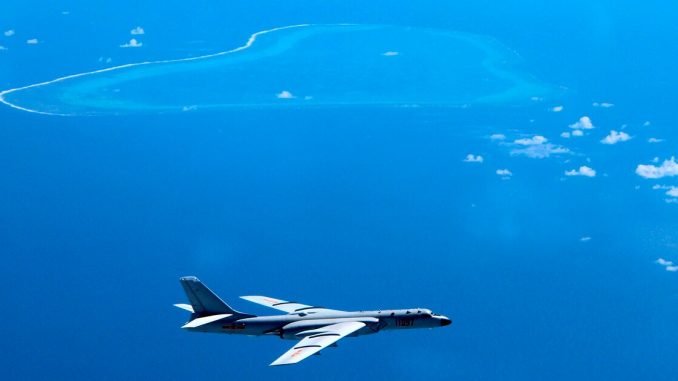
BEIJING — China said Thursday that long-range bombers were among the aircraft that took part in recent aerial drills over the South China Sea amid rising tensions between Washington and Beijing over the strategic waterway.
The exercises included nighttime takeoffs and landings and simulated long-range attacks, Defense Ministry spokesperson Ren Guoqiang said. Among the planes were H-6G and H-6K bombers, upgraded versions of planes long in use with the People’s Liberation Army Air Force and the People’s Liberation Army Navy Air Force, Ren said.
He said the exercises had been previously scheduled and were aimed at boosting pilot abilities to operate under all natural conditions. It wasn’t clear whether live bombs were used.
Ren’s statement appeared to distance the drills from recent accusations exchanged between the sides over China’s claim to virtually all of the South China Sea, which it has buttressed in recent years by building man-made islands equipped with runways.
/cloudfront-us-east-1.images.arcpublishing.com/mco/KTCLQIPSJ5E3DIQDK5IRBNTQWQ.jpg)
US rejects nearly all Chinese claims in South China Sea
The Trump administration escalated its actions against China on Monday by stepping squarely into one of the most sensitive regional issues dividing them and rejecting outright nearly all of Beijing’s significant maritime claims in the South China Sea.
The U.S. this month for the first time rejected China’s claims outright, prompting Beijing to accuse it of seeking to create discord between China and its neighbors. Five other governments also exercise claims in the South China Sea, through which around $5 trillion in trade is transported annually.
Previously, U.S. policy had been to insist that maritime disputes between China and its smaller neighbors be resolved peacefully through U.N.-backed arbitration. But in a statement, Secretary of State Mike Pompeo said the U.S. now regards virtually all Chinese maritime claims outside its internationally recognized waters to be illegitimate. The shift does not involve disputes over land features that are above sea level, which are considered to be “territorial” in nature.
“The world will not allow Beijing to treat the South China Sea as its maritime empire,” Pompeo said.
/cloudfront-us-east-1.images.arcpublishing.com/mco/TFHN2XCCZVH7RBEOD4W2WAH4TU.jpg)
Although the U.S. will officially continue to remain neutral in the territorial disputes, the announcement means the administration is in effect siding with governments which oppose Chinese assertions of sovereignty over maritime areas surrounding contested islands, reefs and shoals.
In other comments Thursday, Ren criticized stepped-up military cooperation between the U.S. and Taiwan, the self-governing island democracy that China claims as its territory, to be brought under its control by force if necessary. Washington and Taipei have no formal diplomatic ties but the U.S. is the island’s key provider of defensive arms and is legally obligated to treat threats to the island as matters of grave concern.
“The U.S. must realize that China is destined to unify (with Taiwan), and China is destined to realize its great rejuvenation,”” Ren said.


Be the first to comment